Westendorf is a powerful antidote to the industrial-strength ski resorts of France: cuter, cheaper, and much more charming. It is also home to some cracking pistes. There is one significant drawback though – the altitude.
Altitude: 1200m
Lifts: 57
Top Lift: 2800m
Ski area: 284km of piste
Adult lift pass: 235€ for six days
Official Site |
Ski Map |
Webcam
Max Pichler is a ski instructor who works at Skischool Westendorf, also known as “The Reds”. He was born and grew up in Westendorf where his family have a hotel in the middle of the village, so he is surrounded by guests 24 hours a day.
“I can’t think of living anywhere else but Westendorf; for me it is the most beautiful place in the world. What I love most about it is the people: everyone is so friendly. We are also very proud of the skiing infrastructure and lift system – there are so many fast new lifts that you never have to queue. Our small village also provides everything you could need”.
Essential Advice for the Perfect Trip
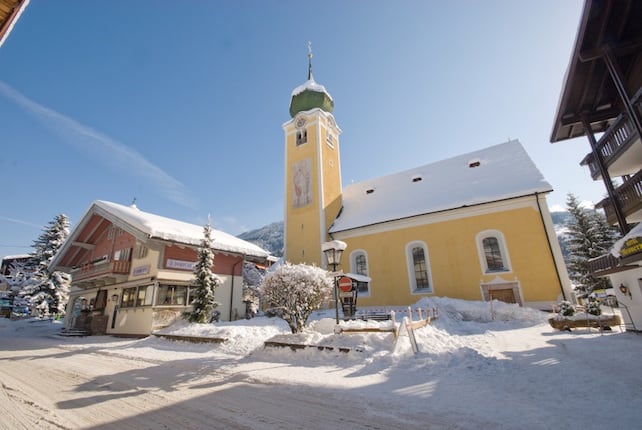
Westendorf is part of the Skiwelt – Austria’s biggest interconnected ski area, which offers 279km of pistes, and draws in skiers from eight holiday villages (there are two outlying annexes as well). Lots of people love it. Here’s why.
It’s pretty and prices are lower than in the A-list French resorts
Not everyone cares about Alpine aesthetics. But if you’re one of those people who finds the high-altitude resorts bleak, the onion-domed churches and villagey streets of Westendorf will be a welcome tonic. The patchwork quilt of forest and and pasture on the mountain, doted with old haybarns, is charming too.
Package holidays are cheaper and so is the cost of a decent mountain lunch. You can eat a proper meal by the light of a crackling fire for little more than a plate of chips in a self-service restaurant in France.
Usually, you fly to Innsbruck airport – and provided your plane can actually land there (it closes quickly during a snowstorm or when there’s fog), the journey to Westendorf is a piece of cake. The airport’s small, you get through it quickly and the transfer by bus will take an hour. Bliss.
If you can’t land in Innsbruck, then you’ll probably be diverted to Munich or Verona, which is less blissful. It’ll stretch the journey by several hours.
ARVE Error: For the maxwidth (maxw) option you need to have normal or lazyload mode enabled, either for all videos in the plugins options or through shortcode e.g. [youtube id=123456 mode=normal maxw=999 ].
But there is one significant drawback
Westendorf is not very high. The village is set at 802m (neighbouring Brixen-im-Thale is even lower, at 794m), with the top of the ski area at 1829m. Compare that with 1850m for the town and 3300m for the highest lift in of Val d’Isere.
It is true that the climate is a bit colder in Austria than in France: but all the same, the snow in the early and late-season weeks can sometimes be unreliable. It’s best to ski it between Christmas and mid-March if you’re going to book your holiday several weeks or months in advance.
One compensation for the altitude is the fact there are trees right to the top of the slopes. Pistes below the treeline are much, much easier to ski than those above it when the light is flat or snow is falling, because the forest adds lowlights – and therefore definition – to the snow. So if the weather’s bad you can ski all day in Westendorf: whereas in the high-altitude resorts of Tignes, Val Thorens, Cervinia or Obergurgl, you’d probably give up after a couple of hours and retreat to your hotel.
Guide to the Mountain
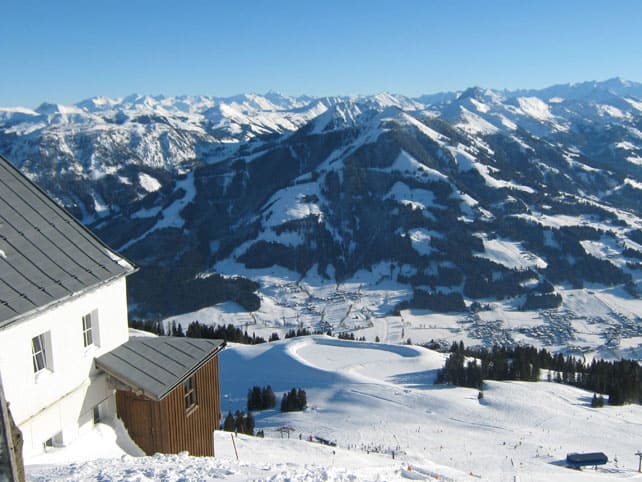
The picture above is of the Choralpe, the 1820m peak that sits above Westendorf. It’s the home of three scintillating top-to-bottom runs, and it’s the reason the skiing in this pretty little Tirolean town deserves wider recognition amongst modern skiers.
The best skiing in the Skiwelt is right here
Why are these pistes so good? Because all of them include extended fall-line sections. As most skiers know, a fall-line descent follows the slope straight downhill, rather than zig-zagging across it: and there’s nothing in skiing, on-piste or off, more satisfying. The mountain opens up beneath you, you settle into your rhythm, and let rip. Bliss.
Choralpe is tailor-made for this kind of straight-down skiing. The best of the runs is on the left as you look at it here. It’s piste number 11 on the piste map – the “Kandler” – and it drops through 1026 vertical metres, following the fall-line for well over half its length. Most of the way it’s a steep red, but there’s a short black section in the middle (which you can avoid if you’re spooked by the pitch). By the end of it your legs will be ready to explode.
My personal favourite piste is the Talkaser, where I have trained throughout my life for ski competitions.
Improvements for Westendorf
Westendorf has spent a lot of money improving access to these pistes: €27m in recent years, much of which was spent on new lifts, including a gondola up the Choralpe from Brixen, on the other side of the valley.
But all the same, this is still a bit of cul-de-sac in the Skiwelt. The Skiwelt is Austria’s biggest interconnected ski area, boasting 284km of pistes: and Westendorf is fully integrated into it. But the fact remains that most of the pistes are on the massif on the other side of the valley, between Brixen-im-Thale and Scheffau – and many skiers don’t seem to make it across to Westendorf. Which leaves the pistes here noticeably less crowded – and all the better because of it.
A highly rated terrain park
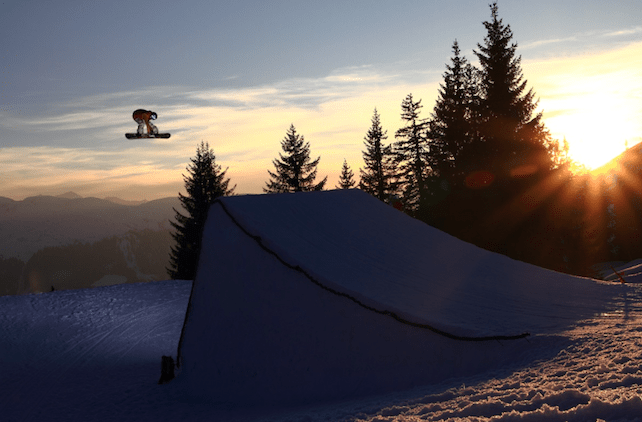
Oddly for such a small village as Westendorf, there’s also a long tradition of freestyle skiing on the Choralpe – thanks to the Boarder’s Playground by the Gampenkogellift at the back of the mountain. It’s one of the most highly-rated snow parks in Austria – and has three lines of features, easy, medium and pro. A Mini Playground was added in 2016 and is aimed at a younger age group.
Oodles of skiing beyond the Choralpe
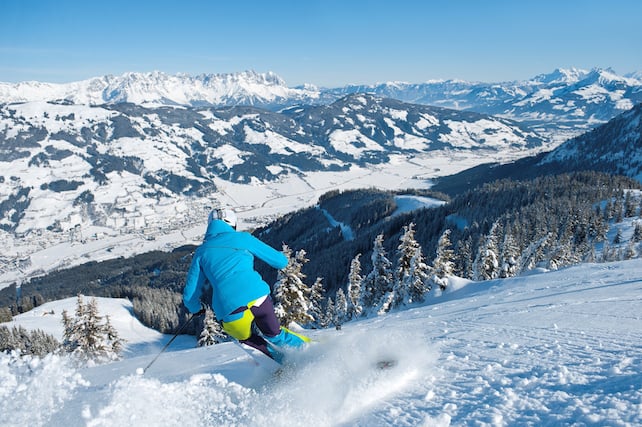
Westendorf may be home to the best skiing in the Skiwelt – but when you tot up all the local runs, they only cover about 50km. So you’ll need to get out and explore the massif on the other side of the valley if you want a week of variety. If the snow’s good, the top-to-bottom run from the 1829m Hohe Salve, down to Hopfgarten at 620m, is the pick of the pistes over here – and there’s some great skiing above Soll, too.
Don’t forget to check your stats on the Skiline, too. It’s a free service to anyone with a Skiwelt pass, and it tracks your progress around the mountain – at the end of each day you can see how many lifts you’ve used, how many km you’ve covered and how many vertical metres you’ve skied. Keep an eye out for the Ski Movie runs, where you can film yourself, and the short (and not very steep) speed measurement tracks, too.
What’s more, if you ski off the back of mountain (via an easy blue piste), you can access the slopes of Kirchberg and Kitzbuhel. There’s a three-minute connection by bus, and then you’ve got another 179km of pistes to play on, on top of the 284km in the Skiwelt. A one-day upgrade to your Skiwelt lift pass, to cover the extra skiing, costs 22€.
Don’t expect lots of off-piste
As we said, the relatively low altitude means the snow can sometimes be iffy. What’s more, if it does dump, the amount of thick forest on the slopes limits the amount of off-piste skiing you can do. So don’t come here expecting the kind of freeriding you can get in high-altitude resorts such as Val Thorens, Verbier or St Anton. This is primarily a place for on-piste skiing, and anyone who wants to push their powder-skiing skills needs to look elsewhere.
Where to Learn
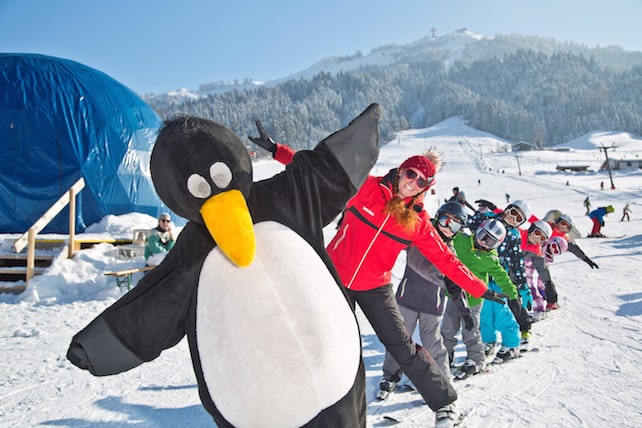
There are three ski schools in Westendorf – Ski School Westendorf (known as The Reds), Ski School Top, and Snow&Co. It’s also home to a biggish area of nursery slopes just above the village. However, this isn’t a great resort for adult beginners for two reasons:
1. The low altitude means the quality of the snow is iffy whenever there’s a thaw. First timers don’t want either slush or hard-packed refrozen snow beneath their skis when they make their first turns.
2. Although the nursery slopes are good, there aren’t many gentle pistes higher up the mountain to progress to once beginners have mastered their basic turns.
However, it does work well for L-plate children (who aren’t going to be skiing all day): and Ski School Westendorf and Ski School Top both make a big effort with kids on the slopes immediately above the village. During the school holidays, you should also find plenty of other English-speaking kids in the classes as well – as Westendorf still gets reasonable numbers of British (and Irish guests).
Westendorf is also a great place for the braver sort of intermediates who want to improve – after all, if the top-to-bottom runs on the Choralpe don’t inspire you to sharpen your technique, nothing will.
Prices are significantly cheaper than in an A-list resort in France. For example, four hours of private tuition here is roughly the same price as two hours from a British ski school in Courchevel. And you get 20 hours of group lessons for the price of 15 with the ESF in La Plagne.
Other activities in and around the resorts for families include sleigh rides (+43 5334 6352), tobogganing from Berggasthof Schrandlhof where there’s a large terrace and a games room, and ice-climbing in Kirchberg.
Where to Stay
As well as a good choice of bars and restaurants, Westendorf has a few boutiques and souvenir shops, two good supermarkets and a nice little shop selling farm produce. A couple of the hotels are classics – well-run, spotless Austrian four-stars, with spacious rooms and a loyal clientele, who come back year after year. And no wonder: you get a lot more for your money here than you do in the high-altitude resorts of France.
The only drawback is that neither is ski-in, ski-out. Of the two, Vital Hotel Schermer is closer to the lifts and pistes: about a five-minute walk in your ski boots. It’s the bigger hotel too – the valley-facing ‘Brixental’ rooms are wonderfully spacious, and there’s an enormous spa/pool area downstairs. The family-run establishment has a pleasant bar featuring live music and a restaurant serving delicious cuisine.
The other hotel worth targeting is the Glockenstuhl. It’s just outside the centre of the village – so you may want to leave boots and skis in a rental shop each night. It’s also on a little road that gets busy in the morning and afternoon, so book a room at the side or back if you can. Nevertheless, people rave about the warm welcome here – and the quality of the spa and food. The fact that there are only 20 rooms makes the atmosphere much warmer and more personal than at the Schermer, too.
Also located in the village centre is the four-star Jakobswirt, which has friendly staff, and has an indoor swimming-pool and half board fare.
Of the many hotel-garnis and pensions (ie B&Bs) in the village, the Pension Christoph is the most highly-rated. There’s nothing fancy about it, but the friendly welcome, spotless rooms and low prices are just what its loyal clientele are looking for. It’s close to the lifts, too. Even closer is the Pension Sonnwend, which is actually ski-in, ski-out.
If you want the independence of your own apartment, the Apart Resort Rabl is the place to go – smart, modern and spacious. Calling the place a “resort” is a bit rich, though: there are only nine apartments in the building, which is five-minute walk from the nearest lift.
Where to Eat
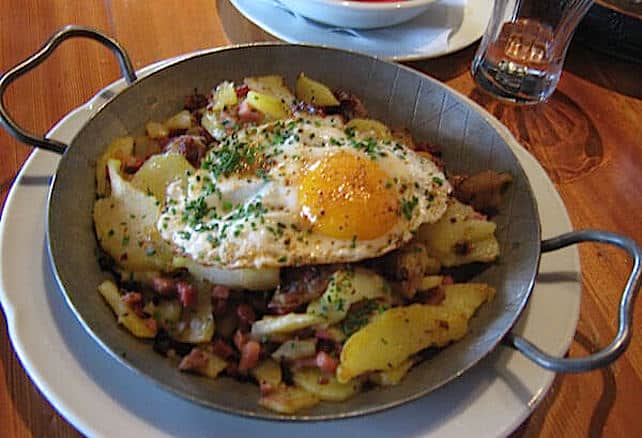
If you’ve ever railed about the rip-off pricing of mountain food in France, then you’ll find Westendorf, Brixen – and the other ski resorts of the Skiwelt – a lovely surprise. For the price of a plate of chips in a self-service in La Plagne, you can get a delicious and filling pan of Austrian bubble-and-squeak (Tiroler Grostl), served by a charming waitress next to a roaring log fire. Suddenly, decent lunches on the slopes seem affordable again.
Our favourite place to eat on the Choralpe, Westendorf’s own mountain, is the lovely Sonnalm – which is just above the village gondola mid-station on piste 110 (no. 66 on the ski map), and home to some of the best Grostl in the Tirol. It’s a snug place to take refuge on a stormy/snowy day. Hearty Tirolean fare is also served up at the Maierhof, which is also on piste 110 (no. 70 on the ski map).
Meanwhile, on the other side of the valley, in the shadow of the Hohe Salve, the Jausenstation Frankalm (+43 660 3478778) – no. 14 on the ski map – is another must-east venue. It’s one of the prettiest mountain huts in all of Austria, let alone the Skiwelt – and while the food is nothing special, the creaking, wood-panelled atmosphere is worthy of a Michelin star. Prices are, if anything, even lower than the Sonnalm’s, above Westendorf.
Back down in the villages, the restaurant scene is a bit subdued – as so many visitors either eat in their hotels or cook for themselves in self-catering apartments. Our favourite eatery is the Reiterstuberl, a lovely little place with a cosy interior. The food is delicious, quite different from the usual mountain fare you’ll usually find in the area, and the owner and staff are welcoming and friendly. In town, there’s also FeinSinn and Il Vagabondo to consider – but if you’ve really got something to celebrate, you need to book a cab to the town of Kirchberg, a little further up the valley. That’s where you’ll find the Rosengarten – the ultra-modern restaurant of Simon Taxacher, who’s the only chef in the whole of the Tirol with two Michelin stars.
In Brixen-im-Thale there’s Zum Fischerstadl (+43 5334 8889), next to what is a trout lake in summer.
Where to Party
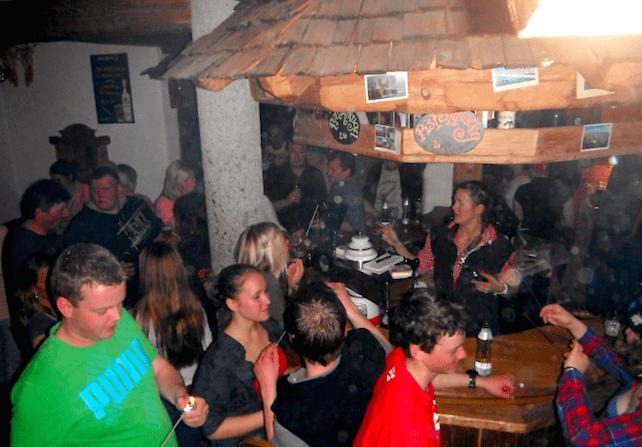
If you’re planning to ski the Skiwelt, and apres-ski is high on your agenda, then Soll is the resort for you: a laid-back, good-natured village on the other side of the lift system, which is bursting with bars.
Meanwhile, over in Westendorf, the atmosphere is more family-focused – and it can be subdued on weekday evenings. But if you bring your own drinking buddies, there are several venues where you can make your own atmosphere. The Bruchstall and Gerrys Inn, both on the nursery slopes (no. 83 and 84 on the ski map), are where apres-ski usually starts, before moving down into the village at the Village Pub and the Kibo Bar. After dinner, Moskito is the place for cocktails. Wunderbar is where you go to dance.
On Tuesdays at 7-9pm there’s floodlit skiing on the nursery slope immediately above the village of Brixen. And it’s well worth cutting the ski day short on one evening of the holiday to try a bit of tobogganing. The local run is 6.6km long and toboggans can be hire from the ski rental centres.
A family treat
An apres-ski treat worth taking your family to is the Alpeniglu near the Hochbrixen lift station. For adults and children aged 12 and up, this little village of igloos, close to the pistes, offers dinner and fabulous torchlit walks through the snowy forest. You get to toast marshmallows by a campfire afterwards too. Yes, it’s expensive, and a bit cheesy – but there’s no denying the romance of setting off into darkness with a flaming torch in hand.
To reach the village you take the main gondola up from Brixen at the end of the day. If you’re doing an evening activity rather than an overnighter, you then walk halfway back down the mountain again before being picked up by a taxi-minibus for the drive back to Brixen.










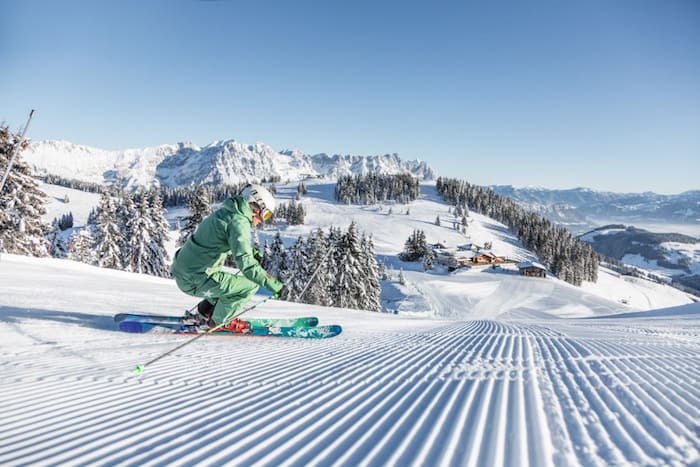
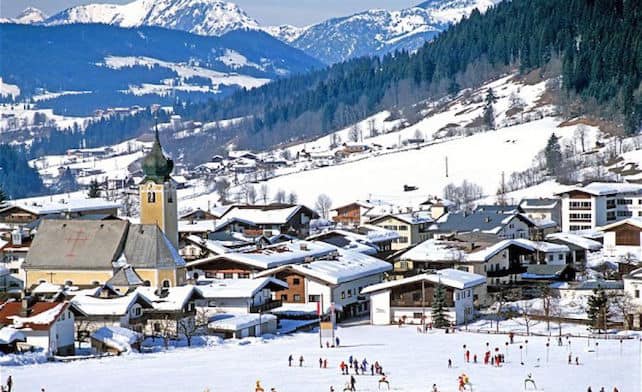
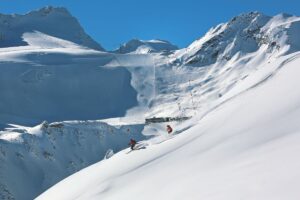
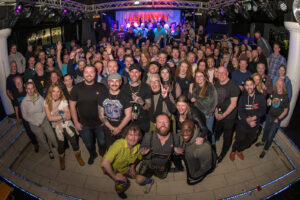
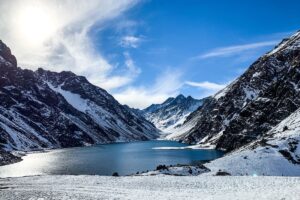
I’ve just returned back from 1 week holiday in Hintetglemm, its was a lovely place and my first time ever in Austria. I’m now looking at Westendorf for my 2018 ski holiday. Thank you for the info you have entered here, it is really helpful. I am looking to travel on 3rd February 2018. Do you think that this is a good time ski with the area being very low?
February is a good time to go there, Jo. You’ll find the skiing a bit more gentle to that of Saalbach-Hinterglemm.
Please please help! I am trying to find the skibus routes for Westendorf to find out if we can take the skibus from our Residence (Kaiser) up to the spa for example and generally to know where the bus routes are in the village. I have found the timetable online but its really hard to trace the route myself. Any suggestions?
Is this the link you saw? https://www.skiwelt.at/en/skiwelt-skibus-timetables.html – it might be worth contacting the tourist office direct +43 57 507 2300. They are very helpful and speak good English.